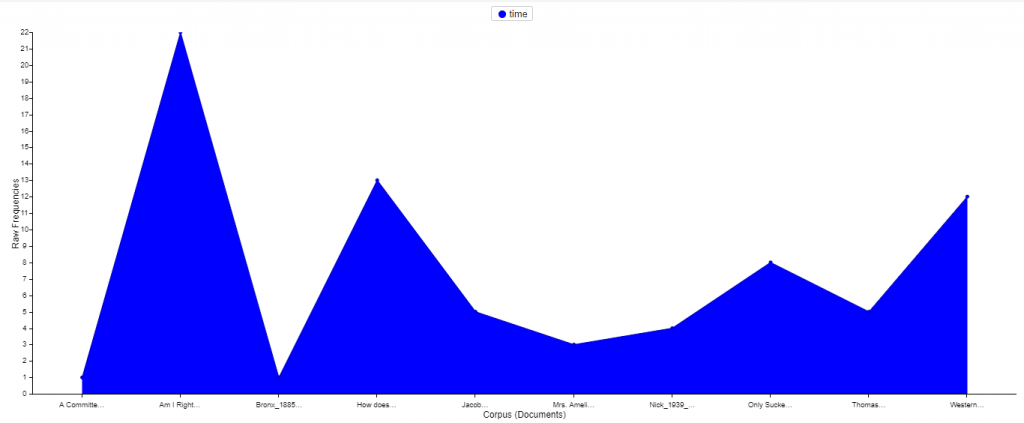

Underground markets and economies have interested me throughout my academic career at George Mason University. I believe that gangs and other black markets have a lot to offer when it comes to a society’s norms and cultures. Gangs represent the misfits of society and specifically during the 1930s people have chosen the gang life due to the economic circumstances created by the Great Depression.
I chose these ten sources from the Library of Congress under the tabs of gang and crime. I chose these two tabs because I felt that they best represented my original historical question: What was gang life like during the 1930s? I found that a lot of the stories were just that, stories. It was difficult to find original transcripts from members of the gangs but a combination of folklore as well as first hand accounts provide an image of how gangs interacted with society.
Voyant tools allowed me to understand what common themes occurred in the gangs of the time. While the cirrus above shows the separate terms “new” and “york”, New York was a recurring location that was relevant to the interviews and stories. New York gang life began in the 1920s and 1930s as way to put money into the member’s pockets but also it was merely a hobby for some but not most 1. I chose not to use our class’ corpus files with the location of New York because New York hosts many different cultures and story which may have skewed the results of my voyant tools. For the second chart I chose to focus on the word “time.” Time is a word the continues to pop up in each of the articles, some more than others. The theme here shows that the interviewees had a lot of time on their hands due to the economic turmoil that the country was facing. Because the citizens had so much time, these articles speak to the reality that they may have joined their gangs to pass the time as mentioned earlier where we discussed that gang life was also a hobby for some.
My expectations of the members of the gangs was to show that members join for financial gain. I was not totally wrong in finding this however I was surprised to know that people joined gangs for a sense of community but to also spend their time. The American Yawp’s section III addresses the economic turmoil that specifically hit New York which led to many citizens being out of work2. I concluded that some of these individuals had no where else to turn for money other than gang life. Engaging with the articles in close and distant reading practices allowed me to see overarching themes for my historical question but the close reading specifically allowed me to see how a vague word like “time” can shed light on the reality that people may have used boredom as an excuse for a life of crime.
- Keever, S. (n.d.). Gang Culture in New York. Retrieved November 6, 2019, from https://web.stanford.edu/class/e297c/poverty_prejudice/gangcolor/gangculture.htm
- Locke, J. L., & Wright, B. (2019). The American yawp: a massively collaborative open U.S. history textbook. Stanford, CA: Stanford University Press
